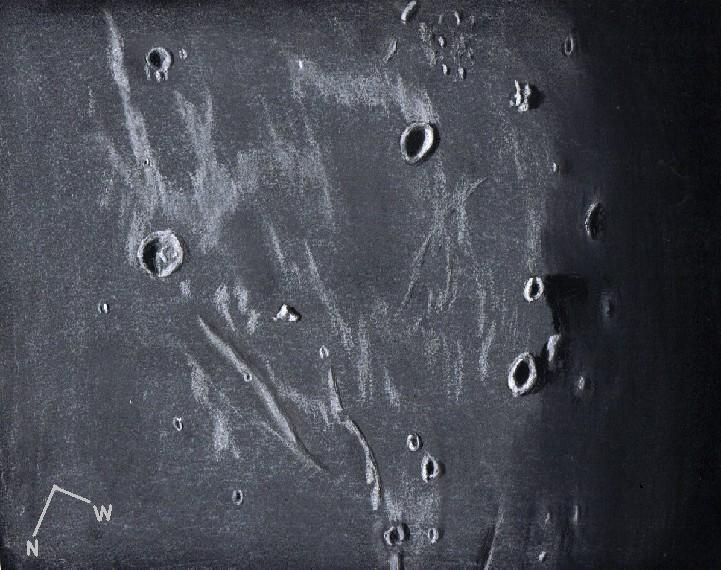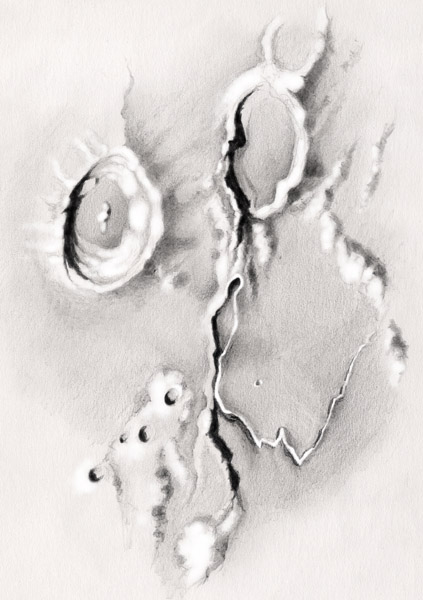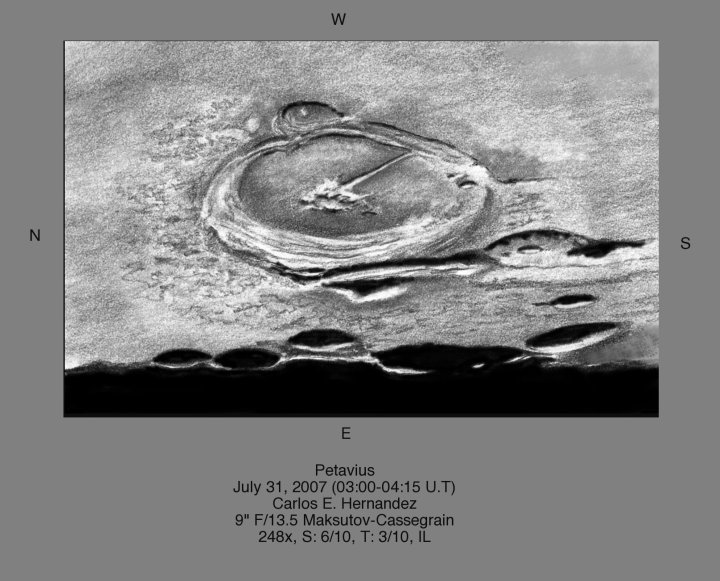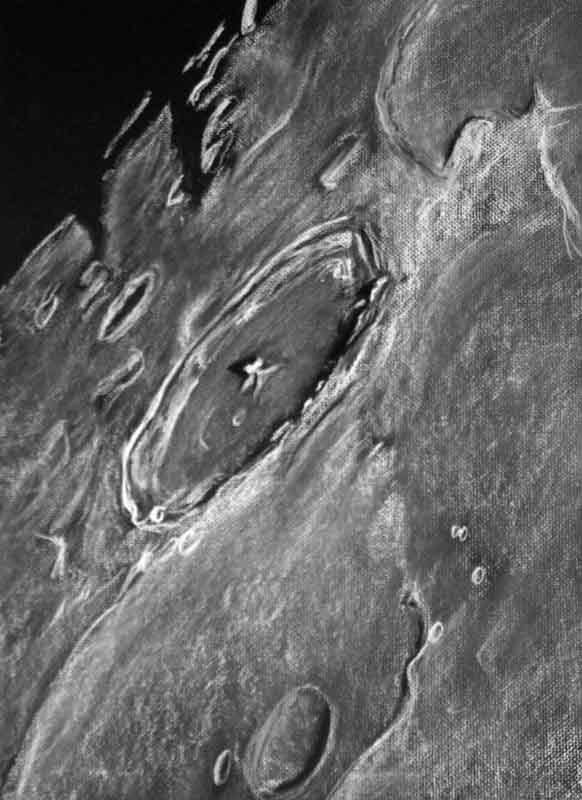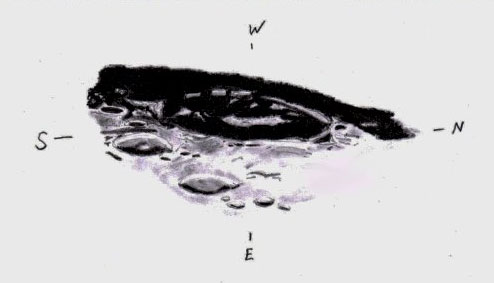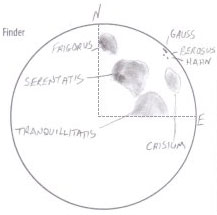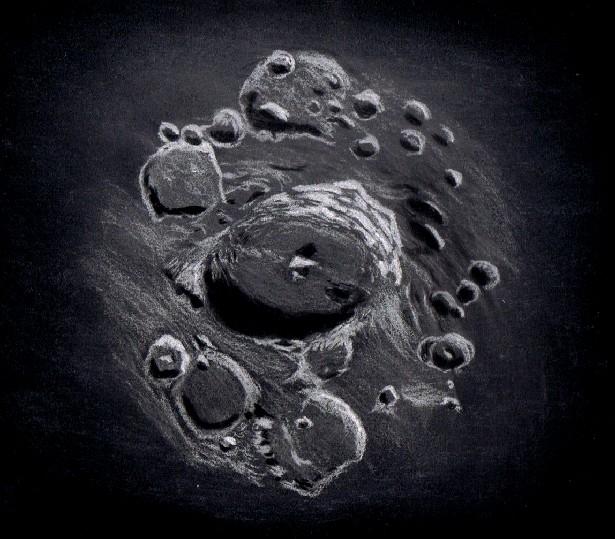Lambert, Lambert R, Pytheas and Draper
Sketch and Details by Richard Handy
Last night about 9:15 pm PST, while the lingering smoke from the local fireworks were still wafting through the evening sky, I decided to try my first sketch through a new binoviewer I had just purchased. I had previously decided to try a target on the mare adjacent to the terminator because I wanted to see if the binoviewer would allow me less eye strain and greater acuity when it came to judging very fine tones of surface albedo.
When I actually started viewing my eyes were instantly drawn to the quiet spectacle of Lambert, Lambert R, Pytheas and Draper on the wide expanse of Mare Imbrium. Just to the south of Lambert, a 30 Km Eratosthenian crater with terraced walls, lay Lambert R, a ghostly ring barely visible even in the grazing light near the terminator, it’s sunken ramparts in ancient times swallowed by hot Imbrium lavas. Further along to the south, the 10 Km Pytheas seems to ride a wrinkle ridge that extends down to 8.8 Km Draper and Draper C.
The entire area of the the mare to the right of the terminator could have used a little more attention. Though I wanted to spend a little more time studying this area prior to the sketch, the Moon and my neighborhood Eucalyptus trees have a thing for each other I guess! : lol : So around 10:45 PDT when the Moon starting playing hide and go seek with me I ended my session.
Here are the details:
Date: 7-4-06
Time Started: 9:34pm PDT
Time Ended: 10:47pm PDT
Seeing: Antoniadi III-IV
Weather: Clear with some smoke from the fireworks
Telescope: 12″ Meade SCT f/10
Binoviewer: WO-Bino-P (1.6X) nosepiece
Eyepieces: WO WA 20mm Plossls
Magnification: 243X
Lunation: 9.52 days
Phase 72.3 degrees
Features: Lambert, Lambert R, Pytheas and Draper
Medium: White and black Conte’ Crayons on black textured Strathmore paper.
Sketch size: 18″ x 24″



